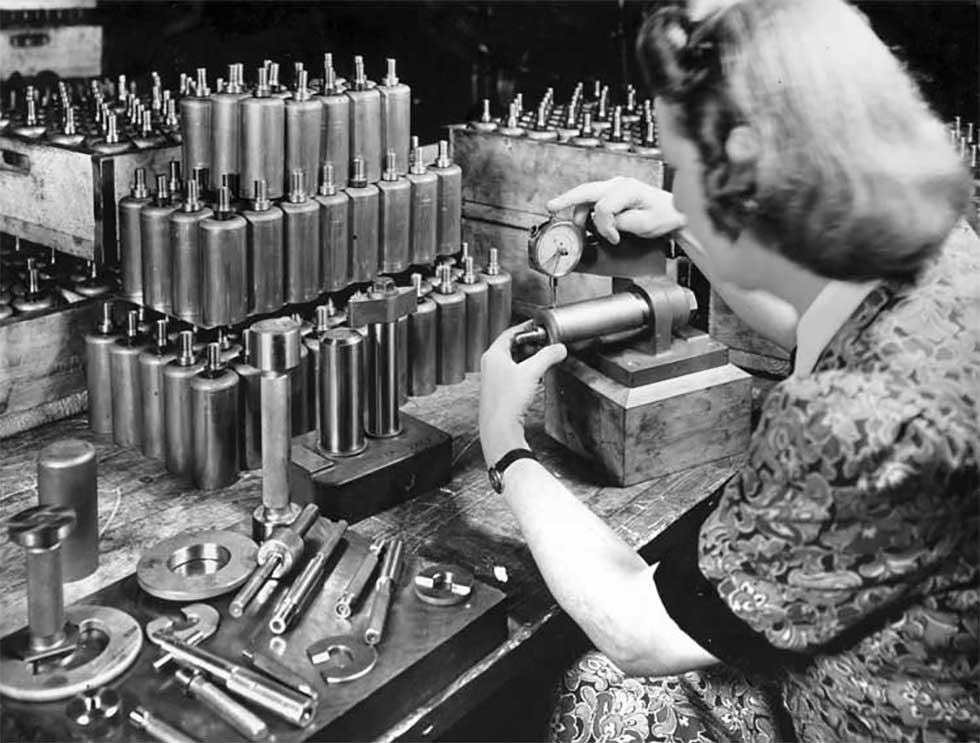


About this record
This is a black-and-white photograph of a woman working in an unidentified munitions factory in 1940. With her left hand, she is slowly rotating a fuse liner for an aerial bomb, as she uses a dial indicator to check that it is exactly cylindrical. On the bench beside her are various tooling and measuring instruments. Numerous fuse liners are around her, some in wooden boxes, perhaps after having been checked.
Educational value
- Features an important process in the manufacture of a type of bomb – carbon-steel fuse liners are carried in the nose of aerial bombs, holding a fuse that activates detonation on impact.
- Details an industrial process that requires precision measurements – in this case the bomb could malfunction if the fuse liner is not exactly cylindrical.
- Portrays a worker helping to mass produce items specifically designed to cause destruction – workers at munitions factories during World War II understood they were performing their patriotic duty.
- Shows a woman at work in what in peacetime would normally have been regarded as a 'man's job' – during the war, many women moved into such jobs in munitions factories and elsewhere, paving the way for the postwar labour market and other social changes.
- Displays a woman who had probably chosen to undertake this work – later in the war, from 1942 onwards, every man and woman had to register with the Manpower Directorate when they turned 18, and the 'Manpower' compelled people to work in munitions factories; many young women chose to join the armed services instead.
- Depicts part of the work done at both the Bendigo and Maribyrnong ordnance factories in Victoria from the 1940s to the mid 1990s – both women and men performed the duty pictured at both plants.
- Shows a worker performing what would have been a dirty job wearing no gloves or protective clothing.
- Shows a range of tooling and measuring instruments from the 1940s, used to check the precision of the manufacturing process and other purposes.
Acknowledgments
Learning resource text © Education Services Australia Limited and the National Archives of Australia 2010.
Related themes
Need help with your research?
Learn how to interpret primary sources, use our collection and more.





